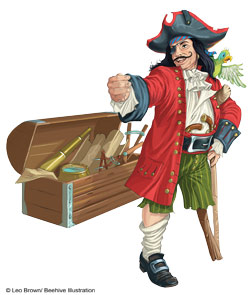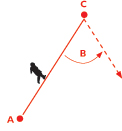Numeracy: All in an angle
Add to My Folder
From trail solvers to pirates – how a cross-curricular approach to angles can help children understand how to measure or estimate a turn

Angle is often presented as a static concept in which children are required to estimate or measure a turn that has already been calculated by someone else, for example the person who drew the triangle in the textbook. Children need to be presented with opportunities to use angle as a dynamic measure of turn, in which they are required to select and find the angle needed for the task.

One way to practise this is to ask groups of children to create geometric shapes using string. For example, to create an equilateral triangle, Child A holds one end of the string, while Child B walks 20 paces holding the other end. Child B must then turn around and face along the line they’ve just made. Child C holds the string in position next to Child B, while the group estimate the angle and distance that Child B now needs to walk. Remind the children that the person pulling the string must always be facing back along the last line that was created when they’re working out the degree of turn needed to make the next line.

Already a member? Sign in below.
Published 2 June 2008
Reviews
You need to be signed in to place a review.